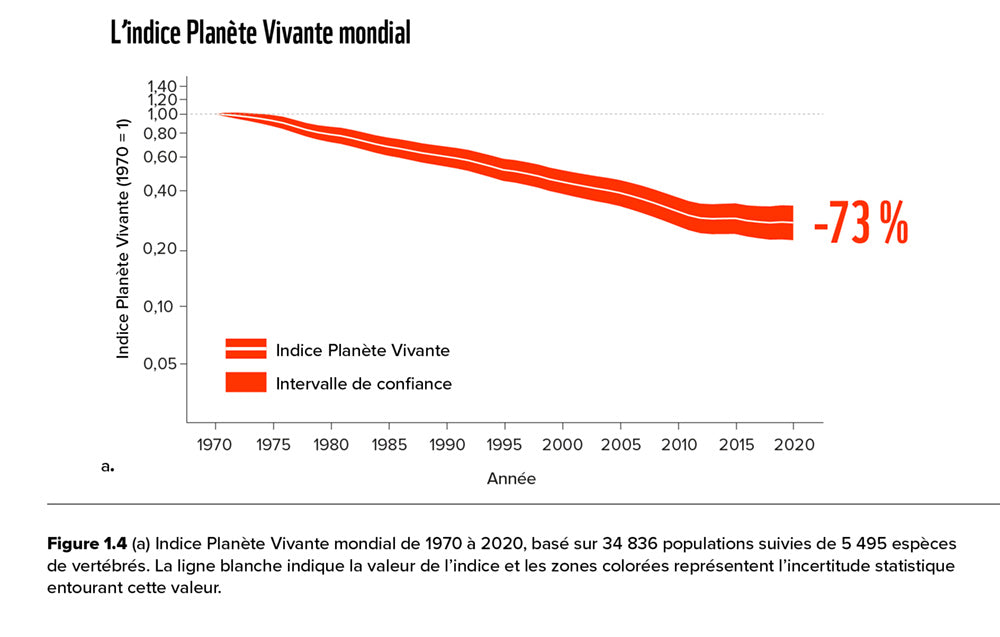
October 23, 2024
The release of the 2024 Living Planet Report by the World Wildlife Fund (WWF) on October 10 sounded yet another alarm: wildlife populations around the world continue to decline at an alarming rate. The report reveals an average 73% drop in species populations since 1970, largely due to the impact of human activities on natural habitats.
As Daudi Sumba, WWF’s Chief Conservation Officer, emphasized during a recent online presentation, the report goes beyond studying wildlife populations. It highlights the importance of ecosystems that sustain human life, stressing the interconnectedness of climate crises and the destruction of nature.

Join Our Collective Effort
Would you like to dive deeper into this topic and shift into solution mode? Register for our webinar “Native Plants: Keystone of Biodiversity.” This online conference offers a chance to explore simple and concrete solutions to contribute to ecological regeneration.
This edition of the report underscores the urgency of addressing the twin crises of climate change and biodiversity loss together. It also warns of growing risks linked to “tipping points” in certain ecosystems, which could lead to irreversible changes and catastrophic consequences for humanity.
The Limits of Traditional Conservation Approaches
Many experts have long acknowledged this truth: while conservation efforts in large protected areas like national parks and wildlife reserves are essential, they are not enough.
These zones, often isolated and too small, cannot maintain stable plant and animal species populations. As Edward O. Wilson’s island biogeography theory demonstrated in 1967, the size of a territory and its proximity to other biodiversity-rich areas are directly linked to species survival. Without ecological corridors connecting these spaces, vulnerable species remain at risk of extinction.
Governments at various levels often lack the capacity to address this issue, especially in more densely populated areas. In Quebec, for instance, most protected areas are located north of the 49th parallel, where biodiversity is less concentrated. Over 80% of Quebec’s biodiversity is found south of the 49th parallel, in areas where public land is scarce and fragmented.
Regeneration Rather Than Simple Conservation
Given this reality, it is time to shift from a conservation approach to a regeneration approach.

It is no longer just about protecting what remains but also about restoring ecosystems damaged by decades of human activities, such as urbanization, urban sprawl, intensive agriculture, and dominant land-use practices. As the Living Planet Report demonstrates, the causes of biodiversity loss are human-made, but it is also through our actions that we can reverse the trend.
Since southern Quebec is primarily made up of private land, this paradigm shift requires everyone to collaborate. Local and even hyper-local initiatives, like those promoted by Douglas Tallamy in his Homegrown National Park project, show that individuals, businesses, and municipalities all have a crucial role to play.
Even those living in urban areas without access to a yard can contribute to regeneration by growing native plants on their balconies!
Where to Start?
If this issue resonates with you and you would like to learn more while exploring solutions within your reach (solutions that also allow you to grow incredible ornamental, edible, and medicinal plants!), we will soon be offering a webinar on biodiversity loss and the crucial role of native plants in reversing this trend. Sign up here.

